Fluoride Tray
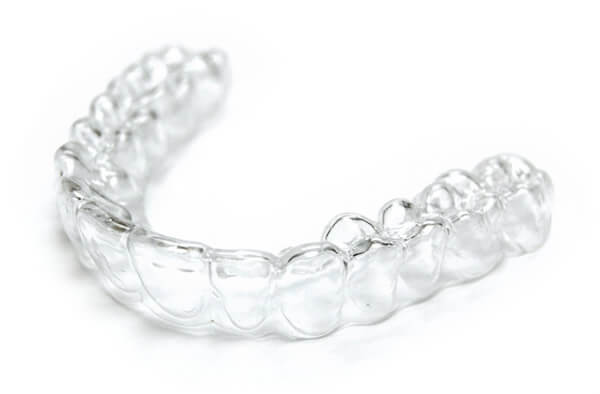
What Is A Fluoride Tray?
A Fluoride Tray is a custom fitted dental device used to apply fluoride treatment to the teeth. The tray is typically made of a thin flexible plastic and is specially made to fit over a patient’s teeth by a dentist or dental hygienist. The tray is filled with a commercially available fluoride gel or foam and worn for a specified amount of time, usually a few minutes but sometimes overnight, to allow the fluoride to penetrate the teeth and strengthen their enamel.
Fluoride trays are often used as a preventative measure to help protect teeth from dry mouth, tooth sensitivity or early-stage tooth decay. Using a fluoride tray is a simple and effective way to improve your dental health and keep your teeth strong and healthy. Before you deciding on whether Fluoride Trays are right for you, there are some things you should know:
- Who Needs A Fluoride Tray?
- What Are The Advantages Of A Fluoride Tray?
- How Much Does A Fluoride Tray Cost?
- What Are The Steps In The Fluoride Tray Making Procedure?
- How To Wear Your Fluoride Tray
- Recommended Oral Hygiene Products For Fluoride Tray
- Oral Hygiene Tips For Fluoride Tray
If you have any further questions about Fluoride Trays or other dental services offered at Atlas Dental, please contact us.

Free phone consultation
Have questions about fluoride trays? Schedule a free phone consultation with our Toronto dentist.

5 star google reviews
Our patients love us! See for yourself why more and more people are choosing Atlas Dental for their fluoride trays.

Book Fluoride Tray Appointment
Ready to make a custom fitted fluoride tray? Book an appointment online.
Who Needs A Fluoride Tray?
Fluoride trays are recommended for a variety of patients, including:
- Children: Fluoride trays can protect children’s developing teeth and reduce the risk of future dental problems.
- Adults with a high risk of dental decay: Fluoride trays can strengthen enamel and reduce the likelihood of cavities in patients with a history of dental problems or high risk of tooth decay.
- Patients with sensitive teeth: Fluoride trays can reduce sensitivity and make it easier to eat and drink without discomfort.
- Patients with early-stage tooth decay: Fluoride trays can remineralize the affected area and strengthen the tooth, preventing decay from getting worse.
- Patients with dry mouth: Fluoride trays can help patients with dry mouth by providing additional fluoride to help prevent tooth decay.
Using a fluoride tray as part of your oral hygiene routine is a safe and effective way to improve your dental health, regardless of your age or dental history. To determine if a fluoride tray is right for you, please contact us.
What Are The Advantages Of A Fluoride Tray?
Using a fluoride tray can provide several benefits for your dental health. Here are some advantages of using a fluoride tray:
- Customized fit: A fluoride tray is customized to fit your teeth, ensuring that the fluoride gel is evenly distributed across your teeth and is in contact with your teeth for an extended period.
- Stronger teeth: Fluoride strengthens your teeth and makes them more resistant to decay and cavities.
- Reduced tooth sensitivity: Fluoride can help to reduce tooth sensitivity, which can be caused by enamel erosion or gum recession.
- Convenient and easy to use: Using a fluoride tray is a simple and convenient process that you can do in the comfort of your own home.
- Cost-effective: Compared to other dental treatments, using a fluoride tray is an affordable option that can provide long-term benefits for your dental health.
By using a fluoride tray, you can ensure that your teeth remain strong, healthy, and resistant to decay and cavities.If you have further questions about the benefits of fluoride tray treatment, please contact us.
Cost of Fluoride Tray
The cost of a Fluoride tray is $84 plus dental lab fee of $100. The codes relevant to fluoride trays in the Ontario Dental Association’s Suggested Fee Guide appear as follows:
Fluoride, Custom Appliances (home application)
- 12601 – Fluoride, Custom Appliance – Maxillary Arch: $84 + Dental Lab Fee (approximately $100)
- 12602 – Fluoride, Custom Appliance – Mandibular Arch: $84 + Dental Lab Fee (approximately $100)
Fluoride trays are usually considered a basic service by dental insurance plans and would be covered by your dental insurance. Be sure to find out from your dental insurance plan provider how much you are eligible for before going ahead with dental treatment. Your dentist can help you submit a predetermination to your dental insurance. Our fees are consistent with the ODA Fee Guide.
For patients without dental insurance, Atlas Dental is pleased to offer dental financing through Dentalcard. Affordable payment plans start at 7.95% for terms of 6 months to 6 years. To learn more about Dentalcard dental treatment financing, follow this link.
What Are The Steps In The Fluoride Tray Making Procedure?
Getting a custom fluoride tray typically involves two appointments: impression and insertion.
- Impression: During the first appointment, your dentist will take an impression of your teeth using a putty-like material or a digital scanning system to create a 3D image of your teeth. This impression is used to create a model of your teeth, which is then used to fabricate your custom fluoride tray. Digital scanning Impressions eliminates the need for putty-like material, making the impression process more comfortable and less messy.
- Insertion: Once your custom fluoride tray is ready, you’ll return to your dentist’s office for the insertion appointment. During this appointment, your dentist will check the fit of the tray and make any necessary adjustments. Your dentist will also provide instructions on how to use the tray and how often to wear it. A fluoride gel that we highly recommend is X-PUR NaF Gel. Please review these post-insertion instructions to ensure proper care for your new fluoride trays.
Once you have received your fluoride tray from the dentist, be sure to wear your fluoride tray daily for the most benefit. If you have further questions about how we make fluoride trays, please contact us.
How To Wear Your Fluoride Tray
To wear your fluoride tray properly, follow these steps:
- First, brush and floss your teeth thoroughly.
- Apply a small amount of fluoride gel or paste to the inside of your tray. Your dentist will provide you with instructions on how much fluoride to use. A fluoride gel that we highly recommend is X-PUR NaF Gel.
- Place the tray over your teeth and bite down gently to ensure a snug fit. You may need to adjust the tray to make it more comfortable.
- Wear the tray for the recommended amount of time, depending on the strength of the fluoride gel.
- After the recommended time has elapsed, remove the tray and spit out the excess fluoride gel.
- Rinse your mouth with water to remove any remaining fluoride gel.
- Clean your fluoride tray thoroughly with water and a soft toothbrush, and store it in its case, open to air dry, until the next use.
It’s important to follow your dentist’s instructions carefully to ensure you are using your fluoride tray correctly and receiving its maximum benefits. For more information about how to wear your fluoride trays, please contact us.
Oral Hygiene Tips For Fluoride Tray
In addition to using recommended oral hygiene products, there are several tips that you can follow to maintain good oral hygiene while using a fluoride tray. Here are some of the most effective tips:
- Keeping Your Dental Night Guard Clean: To keep your night guard free of biofilm accumulation, we recommend that you clean it using an ultrasonic cleaner, such as the Debatlog Ultrasonic Cleaner in a Polident Daily Denture Cleaner solution.
- Brush your teeth twice a day: Conventional wisdom says that you should brush at least twice a day; once in the morning and once before you go to bed. This will help remove plaque and bacteria that can cause tooth decay and gum disease. Two times a day is a good rule of thumb. But ideally, you should brush right after a meal. This is to maximize the amount of time your teeth stay clean between meals.
- Use a soft bristle toothbrush or electric toothbrush: A soft-bristled toothbrush or electric toothbrush can help prevent damage to your teeth and gums, especially if you have dry mouth. A soft bristle manual toothbrush we highly recommend is Curaprox CS5460 Ultra Soft Swiss Toothbrush. An electric toothbrush that we highly recommend is Philips Sonicare Protectiveclean 6100.
- Use a high fluoride concentration toothpaste: Be sure to use a high fluoride toothpaste to strengthen your tooth enamel. One brand that we highly recommend is Colgate PreviDent 5000 ppm Booster Plus Toothpaste
- Floss daily: Flossing can help remove food particles and plaque from between your teeth, which can help prevent cavities and gum disease. If traditional floss is too difficult to use, consider using a water flosser.
- Use mouthwash: Rinsing with a high fluoride or dry mouth mouthwash can help freshen your breath and reduce bacteria in your mouth. We highly recommend Biotene Dry Mouth Moisturizing Mouthwash for our dry mouth patients and Crest Pro-Health Densify Anticavity Fluoride Mouth Rinse for our patients that need higher fluoride concentration.
- Avoid sugary and acidic foods: Foods and drinks that are high in sugar and acid can damage your teeth and worsen dry mouth symptoms. Instead, choose foods that are high in water content, like fruits and vegetables.
- Attend Regular Check-Ups And Cleanings: Schedule regular check-ups and teeth cleanings with your dentist to monitor the health of your teeth and gums. Your dentist will examine your teeth and take digital dental x-rays to check for any potential problems, such as recurring tooth decay, as well as clean the area and surrounding teeth to remove any plaque or tartar buildup.
By following these oral hygiene tips, you can help manage your dry mouth symptoms and maintain good dental health. For more information about oral hygiene practices in conjunction with fluoride tray treatment, please contact us.
We also think you’ll like…
Icon Resin Infiltration
Icon Resin Infiltration What Is Icon Resin Infiltration? Icon resin infiltration is a minimally invasive dental procedure designed to treat white spot lesions on teeth.
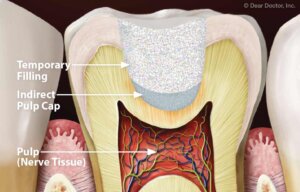
Indirect Pulp Capping
Indirect Pulp Capping What Is Indirect Pulp Capping? Your dental health is a crucial part of your overall well-being, and it’s essential to stay informed
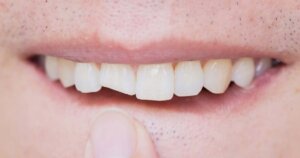
Missing or Loose Tooth Filling
How To Fix My Missing or Loose Tooth Filling What Causes A Tooth Filling To Fall Out? If a piece of your Tooth filling is
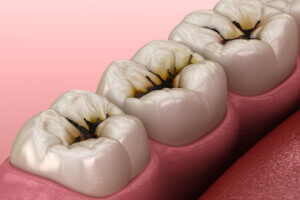
Cavity
Cavity What Is A Cavity? A Cavity, also known as dental caries, is a common dental problem that affects people of all ages. It is
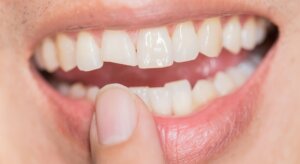
Chipped Tooth
Chipped Tooth What Is A Chipped Tooth? A chipped tooth is a common dental issue that occurs when a small portion of the tooth enamel

Missing Tooth Filling
Missing Tooth Filling What Is A Missing Tooth Filling? A dental filling is a common treatment used to fix a tooth that has been damaged

